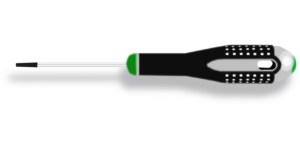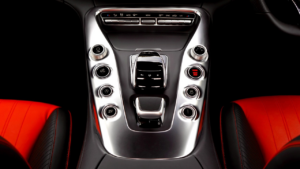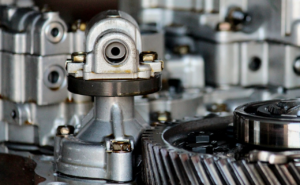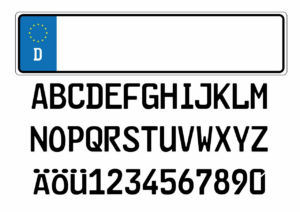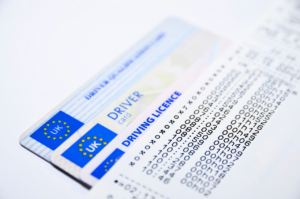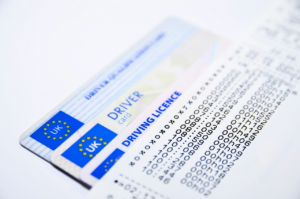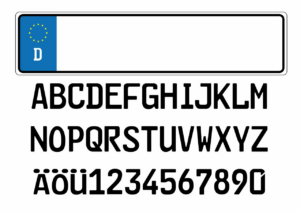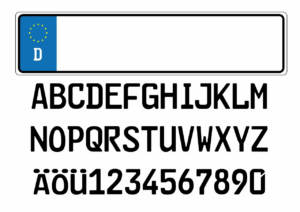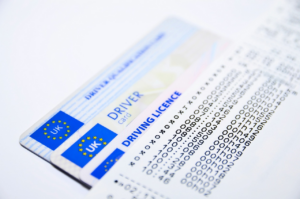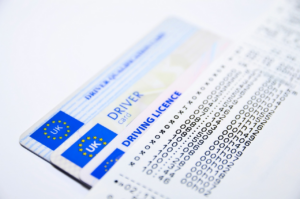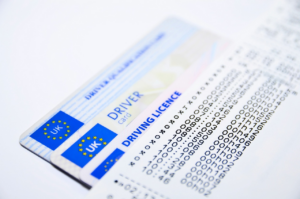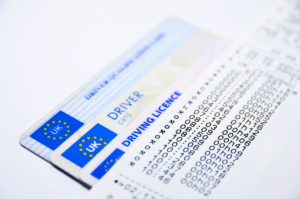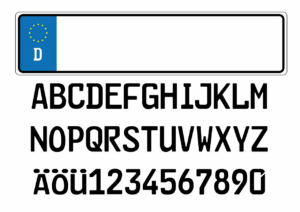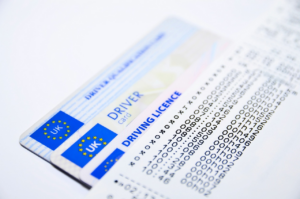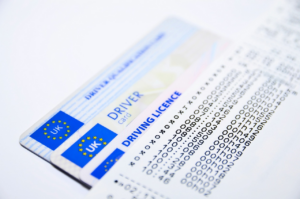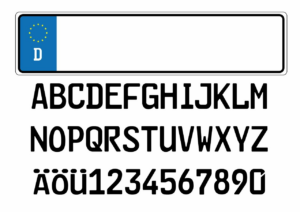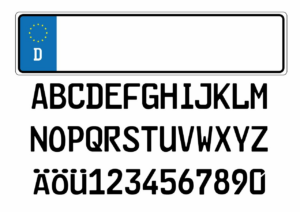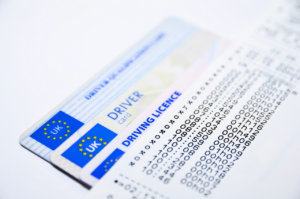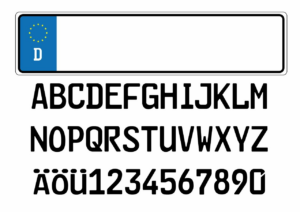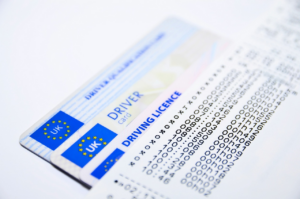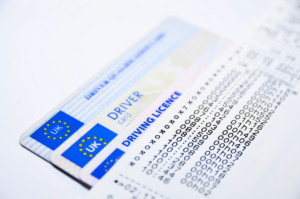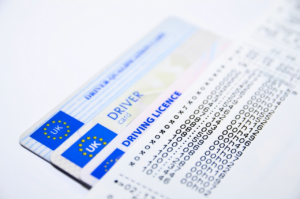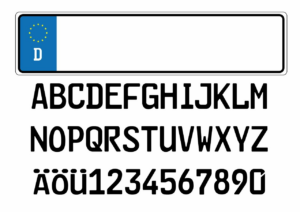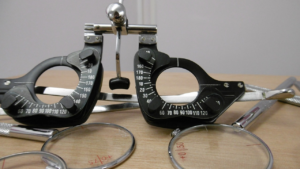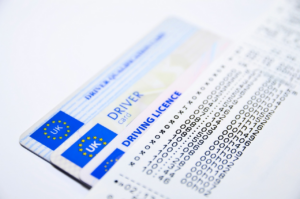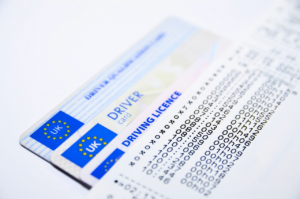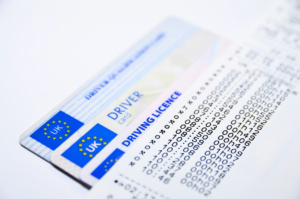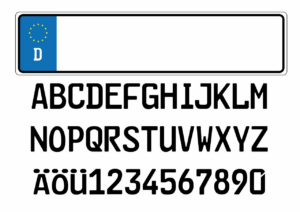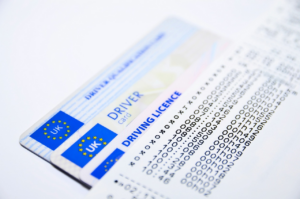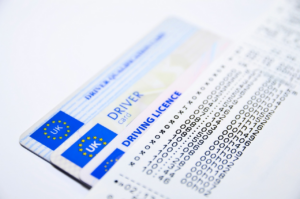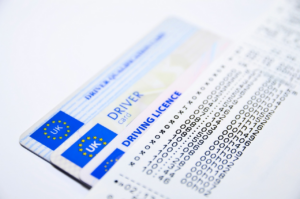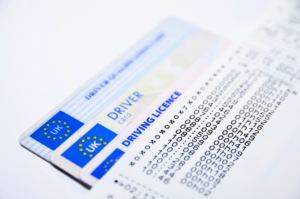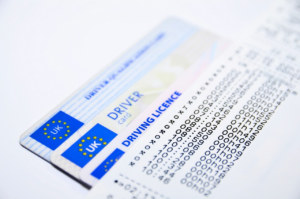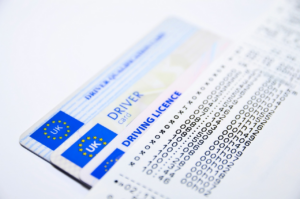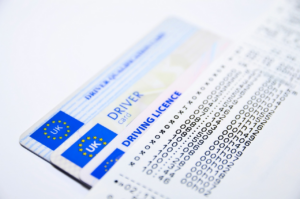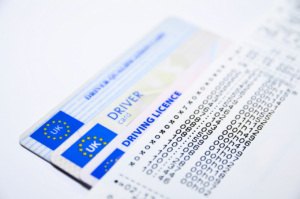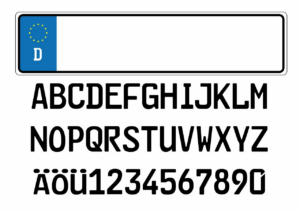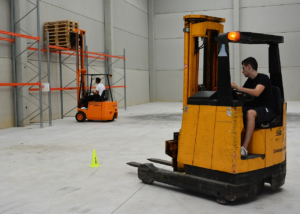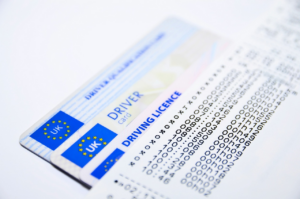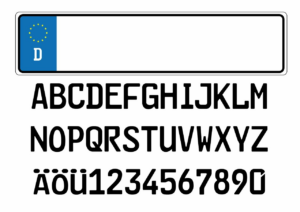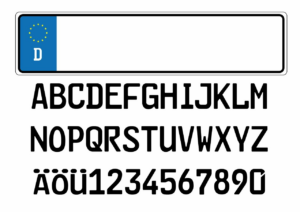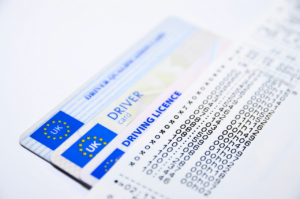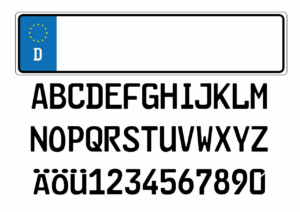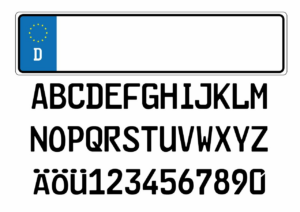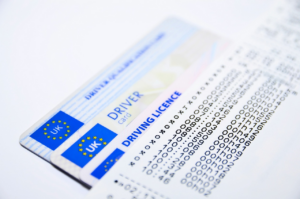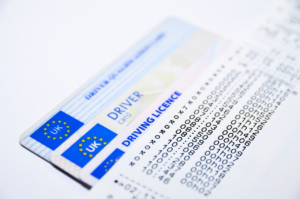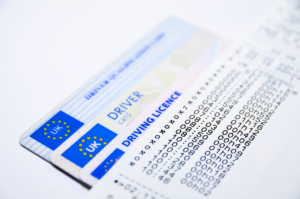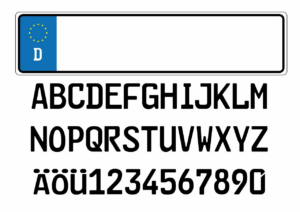Do you know that your tires play a crucial role in maintaining your vehicle’s fuel efficiency? Yes, you heard it right! By taking proper care of your tires, you can significantly improve your fuel economy and reduce your carbon footprint.
Neglecting tire maintenance can lead to under-inflated tires, which can cause your vehicle to consume more fuel and emit more pollutants. Therefore, it is essential to follow some tips and tricks to improve tire maintenance and fuel efficiency.
In this article, we will discuss seven practical tips that you can follow to ensure your tires last longer and keep your vehicle running efficiently. From checking your tire pressure regularly to monitoring your tires for signs of wear and tear, we have got you covered.
So, whether you are a seasoned driver or a new one, read on to learn how you can improve your tire maintenance and fuel efficiency.
Check Your Tire Pressure Regularly
Make sure you’re checking your tire pressure regularly to keep your ride smooth and efficient. Proper tire pressure not only improves fuel efficiency, but it also extends the life of your tires.
Underinflated tires increase rolling resistance, which requires more energy to move the car and, therefore, more fuel. Overinflated tires can cause uneven wear on the tread and lead to a shorter lifespan for the tire.
To check your tire pressure, you’ll need a tire pressure gauge. Simply remove the valve cap, press the gauge onto the valve stem, and read the pressure displayed. Compare the reading to the recommended pressure listed in your vehicle’s manual or on the tire information placard located on the driver’s side door jamb.
If the pressure is too low, add air until the correct pressure is reached. If the pressure is too high, release air until the correct pressure is achieved.
Checking your tire pressure should be done at least once a month or before any long trips to ensure optimal performance and fuel efficiency.
Rotate Your Tires
Rotating your tires is a simple yet effective way to extend the lifespan of your vehicle’s wheels. Tire rotation is the process of moving the tires from one position to another, typically from front to back or diagonally. This helps to ensure that your tires wear evenly.
When tires are not rotated regularly, the front tires will wear down faster than the rear tires due to the weight distribution of the engine. This can lead to uneven tread wear and a shorter lifespan for your tires.
To rotate your tires, you can either take your car to a mechanic or do it yourself. If you choose to do it yourself, you’ll need a jack, jack stands, and a lug wrench. First, consult your owner’s manual for the recommended rotation pattern. Then, loosen the lug nuts on each tire, lift the car with the jack, and place the jack stands under the car for added stability.
Remove the tires and move them to their new position. Finally, tighten the lug nuts and lower the car back to the ground. By rotating your tires every 5,000 to 8,000 miles, you can ensure that they wear evenly and last longer, which can lead to improved fuel efficiency and cost savings in the long run.
Invest in High-Quality Tires
If you’re looking to invest in high-quality tires, there are a few things you should know.
First and foremost, there are different types of tires to choose from, including all-season, summer, and winter tires.
Additionally, low-rolling-resistance tires can help improve your fuel efficiency, making them a great option for those looking to save money at the pump.
Finally, investing in quality tires can provide a range of benefits, including improved handling, better traction, and increased safety on the road.
Types of Tires
Choosing the right type of tire is crucial for getting the most out of your vehicle’s performance. There are several types of tires available in the market, each designed to cater to different driving scenarios.
The most common types are all-season, summer, winter, and performance tires. All-season tires are the most versatile and can handle a wide range of weather conditions. They are designed to provide good traction in both wet and dry conditions, making them a popular choice for everyday driving.
Summer tires, on the other hand, are designed to offer maximum grip and handling in warm and dry conditions. They are not suitable for cold and wet weather, as they tend to lose traction in such conditions.
Winter tires are designed to provide optimal performance in cold and snowy conditions. They have a unique tread pattern and a softer rubber compound that allows them to maintain their grip on slippery roads.
Finally, performance tires are designed for high-speed driving and offer superior handling and grip. However, they tend to wear out faster than other types of tires and are not suitable for everyday driving.
Low-Rolling-Resistance Tires
You can significantly improve your vehicle’s fuel efficiency by considering low-rolling-resistance tires. These tires are designed to reduce the amount of energy required to keep them rolling, which means your engine doesn’t have to work as hard to move your car.
The tread patterns and rubber compounds used in these tires are carefully engineered to reduce rolling resistance while still providing good traction and handling. In addition to improving fuel efficiency, low-rolling-resistance tires also tend to produce less noise and last longer than traditional tires.
To find the right low-rolling-resistance tires for your vehicle, you’ll need to consider factors like your driving style, the type of roads you typically drive on, and the climate in your area. Some low-rolling-resistance tires are optimized for city driving, while others are designed for highway use. Some are better suited to wet conditions, while others perform best on dry roads.
Your tire dealer can help you choose the right tires for your needs, and can also advise you on proper tire maintenance to ensure that you get the most out of your investment. By selecting the right low-rolling-resistance tires and taking good care of them, you can improve your vehicle’s fuel efficiency, save money on gas, and reduce your carbon footprint.
Benefits of Quality Tires
If you’re serious about improving tire maintenance and fuel efficiency, then you need to consider the benefits of quality tires. While low-rolling-resistance tires are a great option, they’re not the only factor that affects your vehicle’s performance. Investing in high-quality tires can have a significant impact on your fuel efficiency, handling, and overall driving experience.
When it comes to choosing quality tires, there are several factors to consider. First, you need to look at the tread pattern and depth. A deeper tread pattern can provide better traction and handling, which can help you stay in control on wet or slippery roads. Additionally, high-quality tires are typically made from better materials, which can help them last longer and resist damage from road hazards.
Here are two bullet point lists to help you understand the benefits of quality tires:
-
Benefits of quality tires:
-
Improved fuel efficiency
-
Better handling and traction
-
Longer lifespan
-
Resistance to road hazards
-
Factors to consider when choosing quality tires:
-
Tread pattern and depth
-
Materials used in construction
-
Size and fit for your vehicle
-
Brand reputation and customer reviews
Overall, investing in quality tires can be a smart decision if you want to improve your vehicle’s performance and fuel efficiency. By choosing tires that are designed for your specific type of driving, you can enjoy a smoother ride, better handling, and lower operating costs in the long run. So, when it’s time to replace your tires, don’t just settle for the cheapest option – take the time to research and invest in quality tires that’ll provide the best performance and value for your money.
Keep Your Tires Aligned
Make sure your tires stay aligned to get the most out of them and enjoy a smoother ride. Proper alignment ensures that your tires are pointing in the right direction and making optimal contact with the road.
When your tires are misaligned, they can wear unevenly, causing them to wear out faster and reducing your fuel efficiency. Additionally, misaligned tires can cause your vehicle to pull to one side or the other, making it harder to control and affecting your ability to drive safely.
To keep your tires aligned, you should have your alignment checked regularly by a professional. Most manufacturers recommend having your alignment checked every 6,000 miles or so, but it’s a good idea to have it checked more often if you notice any issues with your car’s handling or if you hit a pothole or curb.
An alignment check typically involves measuring the angles of your wheels and adjusting them if necessary to make sure they’re pointing in the right direction. It’s a relatively simple and inexpensive process that can help you get the most out of your tires and keep your car running smoothly.
Balance Your Tires
Let’s learn how to balance your tires for a smoother and safer ride. Balancing your tires is the process of ensuring that the weight of your wheels and tires is evenly distributed. Imbalanced tires can cause vibrations in your vehicle, leading to a bumpy ride and potential damage to your suspension system.
Here are five tips to help you balance your tires like a pro:
- Schedule regular tire balancing checks: Ideally, you should have your tires balanced every 5,000 to 6,000 miles or at least once a year, whichever comes first.
- Use the right balance weights: Ensure that your mechanic uses the right balance weights for your specific wheel and tire combination. Using the wrong weights can lead to further imbalance and cause damage to your wheels.
- Check the tire pressure: Before balancing your tires, ensure that they’re inflated to the manufacturer’s recommended pressure. Incorrect tire pressure can cause uneven wear, leading to imbalance.
- Avoid potholes and rough roads: Hitting potholes and driving on rough roads can cause your wheels to become misaligned and unbalanced. Try to avoid these road hazards as much as possible.
- Rotate your tires: Regular tire rotations can help to distribute the wear on your tires evenly, ensuring that they remain balanced for longer periods.
Following these tips can improve your tire maintenance and fuel efficiency, as well as ensure a smoother and safer ride for you and your passengers. Remember, a well-balanced tire is a happy tire!
Avoid Overloading Your Vehicle
To ensure a safe and comfortable ride, it’s important for you to avoid overloading your vehicle. Overloading your vehicle can cause a number of issues, including reduced fuel efficiency, increased tire wear, and potential safety hazards.
When you overload your vehicle, you put excess strain on your tires, suspension, and brakes, which can cause them to wear out more quickly and require costly repairs. To avoid overloading your vehicle, it’s important to know its weight limits.
Check your vehicle’s owner manual or consult with a professional to determine the maximum weight capacity for your vehicle. This includes not only the weight of passengers but also any cargo or equipment you may be carrying. Be sure to distribute weight evenly throughout the vehicle and avoid overloading one side more than the other.
By following these tips, you can ensure a safer, more efficient ride for you and your passengers.
Drive Responsibly
If you want to improve your fuel efficiency and extend the lifespan of your tires, it’s important to drive responsibly. Aggressive driving can increase fuel consumption and wear on your tires, so it’s best to avoid harsh braking and accelerating.
Instead, try to maintain a steady speed and avoid sudden movements. By adopting better driving habits, you can save money on fuel and reduce the need for frequent tire replacements.
Effects of Aggressive Driving
Aggressive driving not only puts you and other drivers at risk of accidents, but it also has negative effects on your tire maintenance and fuel efficiency. Hard braking, sudden acceleration, and speeding can cause your tires to wear out faster, leading to decreased performance and shorter lifespan. This not only means you’ll have to replace your tires sooner than expected, but it also puts a dent in your wallet as it increases your fuel consumption.
In addition, aggressive driving puts more strain on your car’s engine and transmission, which also leads to increased fuel consumption. The harder you press on the gas pedal, the more fuel your car uses to maintain its speed. This means that if you constantly accelerate and brake harshly, you’ll have to refill your gas tank more often. This can be expensive in the long run. By driving responsibly and avoiding aggressive behaviors, you can save money on fuel and extend the life of your tires.
Fuel Efficiency Tips
You can easily save money at the gas pump and drive for longer distances by making small adjustments to how you drive your car. Here are some fuel efficiency tips you can follow:
-
Avoid idling for long periods of time. Idling wastes fuel and emits harmful pollutants into the air. If you’re going to be stopped for more than a minute, turn off your engine.
-
Drive at a steady speed. Rapid acceleration and braking can lower your fuel efficiency by up to 33%. Try to maintain a consistent speed and anticipate traffic patterns to avoid sudden stops.
-
Use cruise control on highways. Maintaining a steady speed on the highway can save you up to 7% in fuel consumption.
-
Remove unnecessary weight from your car. Extra weight in your vehicle can decrease your fuel efficiency. Remove any unnecessary items from your trunk or backseat to improve your gas mileage.
By following these fuel efficiency tips, you can reduce your carbon footprint and save money on gas. Remember to always drive safely and responsibly, while keeping in mind the impact of your driving habits on the environment.
How Driving Habits Affect Tires
Driving habits can have a significant impact on the lifespan and safety of your tires, so it’s important to be aware of how your actions behind the wheel can affect this crucial component of your vehicle. One of the most common bad habits that can harm your tires is sudden braking. When you slam on the brakes, the weight of your vehicle is transferred to the front tires, which can cause them to wear out faster. Additionally, sudden stops can also result in flat spots on the tires, which can lead to uneven wear and vibrations while driving.
Another habit that can have a negative impact on your tires is speeding. When you drive above the recommended speed limit, your tires are exposed to more heat and friction, which can cause them to wear out faster. Moreover, speeding can also increase the risk of blowouts and punctures, as your tires are more likely to hit potholes and other road hazards. To help you understand how your driving habits affect your tires, here’s a table that shows some common habits and their impact on tire lifespan and safety:
| Driving Habit | Impact on Tire Lifespan | Impact on Tire Safety | |||
|---|---|---|---|---|---|
| Sudden braking | Shortens lifespan | Increases risk of flat spots, vibrations | |||
| Speeding | Shortens lifespan | Increases risk of blowouts, punctures | |||
| Overloading vehicle | Shortens lifespan | Increases risk of blowouts, overheating | |||
| Driving on underinflated tires | Shortens lifespan | Increases risk of blowouts, uneven wear | Reduces fuel efficiency | Increases braking distance |
Monitor Your Tires for Signs of Wear and Tear
Keep an eye on your tires for any signs of wear and tear, as it can greatly impact their performance and lifespan. Regularly inspect your tires for any signs of cracking, bulging, or uneven wear on the tread. These can indicate that your tires are in need of replacement.
In addition, be sure to check your tire pressure regularly, as underinflated or overinflated tires can also lead to premature wear and decreased fuel efficiency. To ensure proper tire maintenance, it’s important to rotate your tires regularly. This helps to evenly distribute wear and tear, extending the life of your tires.
Additionally, have your tires balanced and aligned as needed to prevent uneven tire wear and ensure proper handling and fuel efficiency. By taking these steps to monitor and maintain your tires, you can improve their performance and lifespan, while also saving money on fuel costs.
Frequently Asked Questions
How often should I check my tire pressure?
To ensure that your tires are functioning at their best, it’s important to regularly check their pressure. Experts recommend checking tire pressure at least once a month, as well as before long trips.
You can check the pressure using a tire pressure gauge, which can be found at most auto parts stores. Simply remove the cap from the tire valve, press the gauge onto the valve, and read the measurement.
Remember to check the pressure when the tires are cold, as heat from driving can cause the pressure to increase. Maintaining proper tire pressure can not only improve fuel efficiency, but also extend the life of your tires and prevent accidents on the road.
Can I rotate my tires myself or should I have them professionally rotated?
If you’re wondering whether you can rotate your tires yourself or if you should have them professionally rotated, the answer is that you can do it yourself, but it’s generally recommended to have a professional do it for you.
Tire rotation involves moving the tires from one position to another to ensure even wear and prolong their lifespan. While it may seem simple enough to do on your own, it requires some technical know-how and the right tools.
A professional will have the expertise and equipment necessary to properly rotate your tires and make sure they are balanced and aligned correctly. Additionally, having your tires rotated by a professional can give you peace of mind knowing that the job was done correctly.
What makes high-quality tires worth the investment?
Investing in high-quality tires is essential for maintaining your vehicle’s safety and performance. High-quality tires offer superior traction, handling, and stability, which can make all the difference in emergency situations.
They also tend to have longer tread life, which means you can go longer between replacements and save money in the long run. Additionally, high-quality tires are designed to reduce rolling resistance, which can improve fuel efficiency and save you money at the pump.
While they may be a bit more expensive upfront, investing in high-quality tires is a smart choice that can ultimately save you money and keep you safer on the road.
How do I know if my tires are misaligned?
If you’re experiencing uneven wear on your tires, or your car is pulling to one side while driving, it’s possible that your tires are misaligned.
One way to check is to inspect your tires for any signs of wear on the inside or outside edges. Another way is to take your vehicle to a professional for a proper alignment.
Misaligned tires not only cause uneven wear, but they can also impact your fuel efficiency, causing your vehicle to use more gas than necessary. By regularly checking and maintaining your tire alignment, you can save money on fuel and ensure a safer, smoother ride.
What are the signs of tire wear and tear that I should be monitoring for?
To ensure that your tires are performing optimally, it’s important to monitor them for signs of wear and tear.
One of the most obvious signs is the tread depth. If the tread is worn down to less than 2/32 of an inch, it’s time to replace your tires.
Additionally, if you notice any bulges or cracks on the sidewall of the tire, it’s a sign that the tire is damaged and needs to be replaced immediately.
Other signs of tire wear and tear include vibration while driving, uneven wear on the tires, and a decrease in overall performance.
By keeping an eye out for these signs, you can prevent accidents and improve the lifespan of your tires.
Conclusion
In conclusion, keeping your tires in good condition is essential for both safety and fuel efficiency. Regularly checking your tire pressure, rotating your tires, and investing in high-quality tires are just a few ways to ensure your vehicle is running at its best.
Keeping your tires aligned and balanced will also help extend their lifespan and improve fuel economy. It’s important to avoid overloading your vehicle and to drive responsibly to prevent unnecessary wear and tear on your tires.
Monitoring your tires for signs of wear and tear, such as uneven tread wear or bulges, can help prevent blowouts or other dangerous situations. By following these tips and tricks, you can improve tire maintenance and fuel efficiency, saving you both time and money in the long run.








